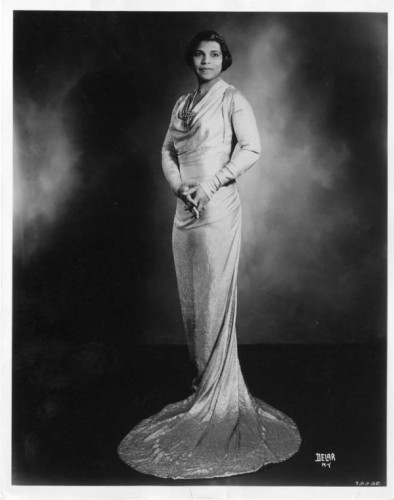Last Updated: March 19, 2024
By Anne Farrow
Considered one of the great singers of the 20th century–and her life spanned nearly the entire century–Marian Anderson was an artist who did not seek to become a symbol of civil rights, yet the times and her country made her so.
A Musical Star
Born into modest circumstances in South Philadelphia, Anderson’s astonishing contralto voice was first recognized in her family’s Baptist church, though she did not begin her formal training until she was 15. In her 1956 autobiography, My Lord, What a Morning, Anderson recounts, without rancor, the prejudice she encountered even as her fame and career grew. She performed in concert halls where Black people could not attend, traveled to performances in segregated Jim Crow railroad cars and endured humiliations and rejections by white society.

Marian Anderson – Hartford History Center, Hartford Public Library and Connecticut History Illustrated
Despite all the racism Anderson experienced, a triumphant European tour (in her 20s) awoke the wider world to her great talent, and she returned to the United States as a star. Conductor Arturo Toscanini said she had a voice that only came around once in a century, and her repertoire of both classical music and the spirituals sung by her enslaved ancestors created a huge demand for her performances.
A Symbol of Civil Rights
The moment that made Anderson a symbol for the ages came in 1939. The Daughters of the American Revolution (DAR) refused to grant her permission to sing a program benefitting Howard University at Constitution Hall (which the DAR owned) in downtown Washington, DC. In the national outrage that followed, First Lady Eleanor Roosevelt surrendered her membership in the DAR and Anderson’s artistry and race became a national debate. Eleanor Roosevelt and others arranged for Anderson to sing at the Lincoln Memorial. On Easter Sunday in 1939, an estimated 75,000-person crowd on the Mall and a radio audience of millions heard Anderson sing a short program of Schubert & Spirituals. “There seemed to be people as far as the eye could see,” Anderson recalled.
At Home in Connecticut
Looking for peace and privacy, Anderson and her eventual husband (they married in 1943), architect Orpheus “King” Fisher, began looking for a property in the country, someplace Anderson could have a garden. They looked around New England and Long Island but settled on Connecticut and bought an old farm in Danbury in 1940. It was not exactly what they wanted, however, so a few years later Fisher designed a home for them on a large property across the street. They called their compound Marianna Farm. Fisher lived there until his death in 1986, and Anderson lived there until a year before her death in 1993.
As a child, Marian Anderson had worried about disturbing family and neighbors during her vocal rehearsals. Her husband built her a free-standing vaulted studio on their property, so she could practice her music without fear of being overheard. That studio, which is a site on the Connecticut Freedom Trail, was donated and moved to the Danbury Museum and Historical Society. Visitors to the museum can see where a great artist sang freely.
Anne Farrow is the co-author of Complicity: How the North Promoted, Prolonged, and Profited from Slavery and is at work on a new book about slavery to be published by Wesleyan University Press.
This article has been updated, learn more about content updating on ConnecticutHistory.org here.









